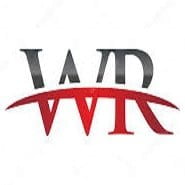-

-
Wikirise.com Advertise with Us HereStats: 4,783 members, 41,615 Posts
Number of Comments : 2,630
Date: Sunday, 24th November 2024
DMO justifies external borrowing as Nigeria’s sovereign bonds lose appeal
By Godwin Emmanuel - July 14, 2022 | Categories: Business Tags: Nigeria
Share this post:

• Insists poor revenue is main challenge
The Debt Management Office (DMO) said the Federal Government’s debt mix aligns with the Debt Management Strategy 2020-2023.
The organisation also claimed the government’s recourse to external debt is aimed at minimising the risk of crowding out the prevent sector from the domestic debt market, adding that the local market is constrained.
DMO said this in reaction to a statement attributed to the Monetary Policy Committee (MPC) to the effect that the government’s appetite for Eurobonds could increase the risk of debt distress.
The Office said the statement was made “without due consideration of the government’s borrowing needs as captured in the yearly budgets, Medium-Term Expenditure Framework (MTEF) as well as the debt management strategy”.
In its defence, DMO noted that the borrowing needs are derived from the yearly budgets, while the borrowing mix is based on the subsisting debt management strategy, which justifies concessional funding against commercial sources such as Eurobonds as FG’s preferred debt option.
“Given the size of new borrowings in the yearly budgets over the years, it would not have been proper for the FG to raise all the funds from the domestic market as this would result in the government crowding out the private sector and raising borrowing rates.
“Consequently, some part of the required funding has to be raised externally. While loans from concessional sources such as the International Development Association (an arm of the World Bank) are relatively cheaper, they are limited in amount. In addition, they are not available for financing infrastructure and other capital projects,” it noted in a statement issued on its website.
Thus, it said, the government accesses concessional and semi-concessional loans while issuing Eurobonds to partly finance the yearly budgets and infrastructure projects.
In the same breath, DMO said the country would need to generate sufficient revenues significantly beyond their current levels, arguing: “Data from the World Bank show that compared to a number of advanced and developing countries who have a higher public debt to GDP ratios than Nigeria, Nigeria has a much lower revenue to GDP ratio. The World Bank’s Economic Outlook for 2020 showed that in 2020, Nigeria’s revenue to GDP ratio was 63 per cent placing it at number 194 out of 196 countries.”
At an online media briefing last year, the Director General of DMO, Patience Oniha, warned that Nigeria risked debt distress if it did not raise its revenue profile. It dismissed worries that the government was overreaching its limit in the debt market, arguing that “the challenge is revenue and not spending.”
DMO’s explanation comes at a time Nigeria’s sovereign bonds are gradually turning to junk on the international market. From January to date, yields of the 10-year bonds have increased by over 100 per cent. They are currently priced at about 15 per cent.
A recent report by The Guardian said the country risked capital ‘blockade’ at the international market as genuine investors dumped its bonds. With the country battling with a credit rating crisis, new debt instruments come at an unaffordable cost just as existing bondholders face asset erosion.